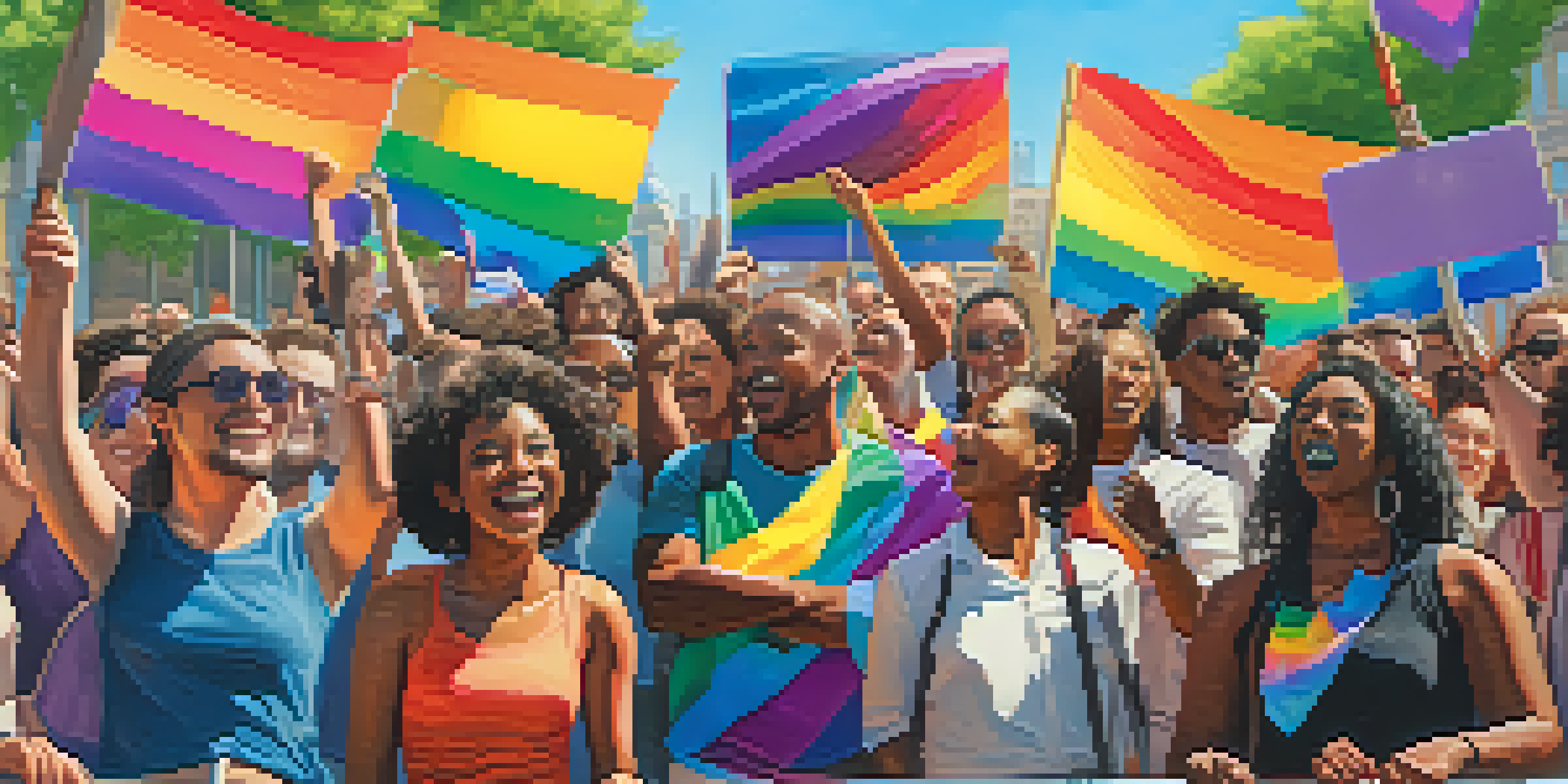The Role of the AIDS Crisis in Shaping LGBTQ+ Activism

Understanding the AIDS Crisis and Its Emergence
The AIDS crisis emerged in the early 1980s, initially affecting gay men and marginalized communities. This devastating health crisis sparked fear and confusion, as little was known about the disease, leading to a desperate need for information and support. As the death toll rose, so did the urgency to act, fostering a sense of community among those affected and their allies. Many activists began to realize that addressing the crisis required not just medical solutions, but also social and political change.
The Birth of Activist Organizations in Response
In response to the AIDS crisis, numerous activist organizations were formed, most notably ACT UP (AIDS Coalition to Unleash Power) in 1987. These groups galvanized the LGBTQ+ community and fought for increased funding for research, better treatment options, and public education about the disease. By organizing protests, educational campaigns, and direct actions, activists brought visibility to the issues surrounding HIV/AIDS. This grassroots approach helped to build a supportive network that empowered individuals to advocate for their rights.
Activism Emerges from Crisis
The AIDS crisis sparked the formation of activist organizations like ACT UP, which mobilized the LGBTQ+ community to advocate for rights, funding, and education.
The Intersection of Health and Human Rights
The AIDS crisis illuminated the intersection of health and human rights, revealing the systemic inequalities faced by LGBTQ+ individuals. Activists highlighted how access to healthcare, social stigma, and discrimination exacerbated the epidemic's impact on marginalized communities. This focus on human rights galvanized broader movements advocating for equality and inclusion, helping to shift public perceptions. By framing AIDS as a social justice issue, activists broadened the conversation beyond health to encompass civil rights.
Cultural Shifts and Representation in Media
The AIDS crisis had profound effects on cultural representation, prompting artists, filmmakers, and writers to address the realities of living with HIV/AIDS. Through powerful storytelling, these creators helped to humanize the issue and foster empathy among the broader public. Films like 'Philadelphia' and the musical 'Rent' brought the struggles of those affected into mainstream consciousness, challenging stereotypes and stigma. This cultural shift played a crucial role in shaping public discourse around LGBTQ+ issues.
Health is a Human Rights Issue
The epidemic highlighted systemic inequalities, prompting activists to frame AIDS as a social justice issue intertwined with healthcare access and discrimination.
The Role of Memorialization and Remembrance
As the crisis unfolded, memorialization became a vital aspect of LGBTQ+ activism, honoring those who lost their lives to AIDS. Events like the AIDS Memorial Quilt served as a poignant reminder of the human cost of the epidemic, allowing families and friends to grieve collectively. These memorials not only commemorated lives but also reinforced the urgency of activism and advocacy. By ensuring that the stories of those lost were told, activists maintained pressure on governments and health organizations to act.
Legacy of the AIDS Crisis in Modern Activism
The legacy of the AIDS crisis continues to shape LGBTQ+ activism today, providing valuable lessons on community organizing and resilience. Modern movements, such as those advocating for LGBTQ+ rights and healthcare equity, draw upon the strategies and successes of their predecessors. The emphasis on intersectionality, recognizing the diverse experiences within the community, also stems from the lessons learned during the AIDS crisis. This legacy not only honors those affected by the epidemic but also inspires ongoing activism for justice and equality.
Cultural Representation Matters
Artistic expressions during the AIDS crisis, such as films and musicals, played a crucial role in humanizing the experiences of those affected and shifting public perception.
Challenges and Ongoing Struggles in Advocacy
Despite the progress made since the AIDS crisis, challenges remain in the fight against HIV/AIDS, particularly in marginalized communities. Stigma, lack of access to healthcare, and ongoing discrimination continue to hinder efforts to combat the epidemic. Activists today are focusing on education, prevention, and treatment to address these ongoing issues. By building on past experiences, the community remains resilient in advocating for comprehensive healthcare and social justice.
Looking Forward: A Unified Vision for the Future
Looking to the future, the lessons learned from the AIDS crisis can inform a unified vision for LGBTQ+ advocacy. Building coalitions across various social justice movements can amplify voices and strengthen efforts toward equality. By fostering inclusivity and understanding, the community can work together to tackle not only HIV/AIDS but also broader issues of discrimination and injustice. The spirit of resilience and activism born from the AIDS crisis serves as a powerful reminder of the importance of solidarity in the fight for rights.